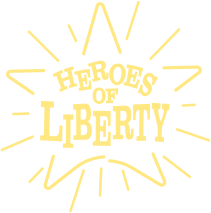“In the 1950's, [Soviet chairman Nikita] Khrushchev predicted: "We will bury you." But in the West today, we see a free world that has achieved a level of prosperity and well-being unprecedented in all human history.” So said Ronald Reagan in Berlin on a spring day in June. He went on to explain why, in the decades following World War II, the Communists failed to overcome the West:
“In the Communist world, we see failure, technological backwardness, declining standards of health, even want of the most basic kind — too little food. Even today, the Soviet Union still cannot feed itself. After these four decades, then, there stands before the entire world one great and inescapable conclusion: Freedom leads to prosperity. Freedom replaces the ancient hatreds among the nations with comity and peace. Freedom is the victor.”
The year was 1987. The world was still in the grip of the Cold War. Europe was divided by the iron curtain, a border that split the continent, and the world into the free West and the communist bloc. Concern that mutual mistrust between the two could spill over into violent conflict was rife. Western leaders were fearful that one wrong move, one wrong word could spark nuclear Armageddon.

Nowhere was that divide more apparent than in Berlin, where the border, in some places a nominal imaginary line, became concrete. West Berlin had enjoyed an economic miracle and was part of the prosperous West. But it was surrounded by 27 miles of concrete and steel, behind which lay communist East Berlin.
It was into this divided city that White House aide Peter Robinson flew in early 1987, ahead of President Reagan’s planned visit.
“West Berlin, this little pocket deep inside East Germany, was a modern city. People were well dressed, there was this sense of color and activity,” Robinson later recalled. Along with the rest of the White House team, Robinson climbed the Brandenburg Gate, where, from an observation platform, they could look into East Berlin.
“It was as though the color had drained from the camera,” he said. “There was a feeling that everything was in a state of disrepair and badly maintained, but turn around and you saw color, activity, people going places. And then you looked back to East Berlin and you saw this kind of strange, colorless void.’’ There, he asked himself, “What can I possibly write that would give the president material equal to this place?”
From there, Robinson met with an American diplomat who sternly warned him away from mentioning the wall, claiming that Berliners by now were used to it. But Robinson wasn’t so sure. When he met with some locals for dinner, he took the opportunity to ask them how they really felt about the wall.
“There was a silence. And I thought, I committed just the kind of gaffe that the diplomat wants the president to avoid. They looked at each other and one man pointed and said, ‘My sister lives just a few kilometers in that direction but I haven’t seen her in more than 20 years. How do you think we feel about that wall?’” Robinson said.
It was following that meeting that Robinson included the line which would shake the world to its foundations when President Reagan delivered it at the Brandenburg gate: “General Secretary Gorbachev, if you seek peace, if you seek prosperity for the Soviet Union and Eastern Europe, if you seek liberalization: Come here to this gate! Mr. Gorbachev, open this gate! Mr. Gorbachev, tear down this wall!”

Looking back on the event now, knowing as we do that two years later the Berlin Wall fell, it seems so right, so natural that Reagan would have said those words. They seem so self-evidently truthful. But the American diplomat who had warned Robinson off mentioning the wall was far from alone in his opinion.
Back in the States, the speech went through numerous drafts, tossed back and forth between the speech-writers, who wanted the line in, and the State Department, who thought it foolish and dangerous. In the end, it was the President himself who settled the matter.
In a meeting with the President ahead of the visit, Robinson told Reagan that his speech would be heard not only in the West, nor only in East Berlin, but all the way to Moscow. And he asked the president what he would like to say. “And the president said, ‘Well, there’s that passage about tearing down the wall. That’s what I want to say to them. That wall has to come down.’”
President Reagan is remembered today for that clarity of thought, and his unerring belief in freedom. He knew that the Cold War would not be won by allowing communism to continue, but by encouraging the people living in communist countries to demand their own freedom. And he believed that the world is a better place for us all when everyone is truly free.
As he said at the time, in reference to the loosening of totalitarianism that way already underway: “We welcome change and openness; for we believe that freedom and security go together, that the advance of human liberty can only strengthen the cause of world peace.”
But above all, he is remembered for his determination in being willing to say the difficult words, being courageous enough to criticize when criticism was needed, and being self-confident enough to ignore those around him who were advising him to take the ‘safe’ path. And that is why your children need to know who Ronald Reagan was.
You can buy his story in the Heroes of Liberty store by clicking here.






